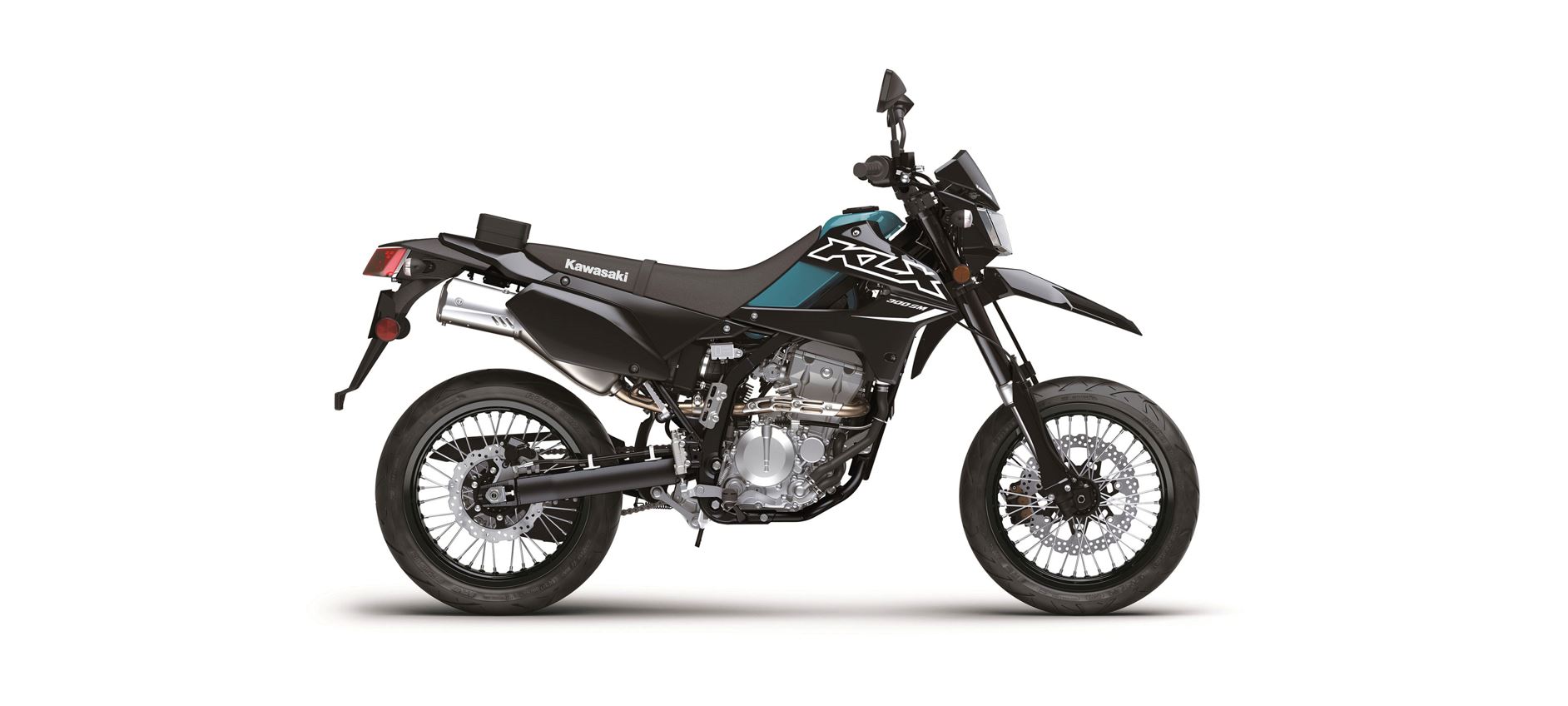2022 Kawasaki KLX300/KLX300SM Wheels
Wheels
Tire Pressure Inspection
- Remove the air valve cap.
- Check the tire pressure often, using an accurate gauge.
- Make sure to install the air valve cap securely.
NOTE
- measure the tire pressure when the tires are cold (that is, when the motorcycle has not been ridden more than 1.6 km (1 mile) during the past 3 hours).
- Tire pressure is affected by changes in ambient temperature and altitude, Wheels Tire Pressure Inspection Remove the air valve cap. Check the tire pressure often, using an accurate gauge. Make sure to install the air valve cap securely.
NOTE
- measure the tire pressure when the tires are cold (that is, when the motorcycle has not been ridden more than 1.6 km (1 mile) during the past 3 hours).
- Tire pressure is affected by changes in ambient temperature and altitude, and so the tire pressure should be checked and adjusted when your riding involves wide variations in temperature or
altitude.
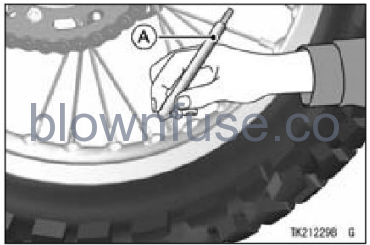
- Tire Pressure Gauge
Tire Air Pressure (When cold)
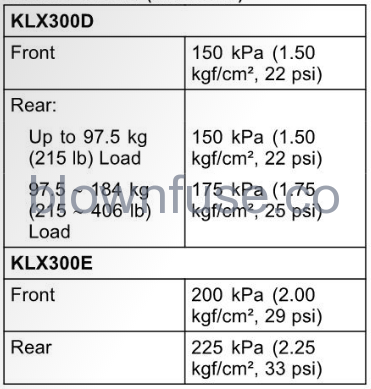
Tire Wear, Damage
As the tire tread wears down, the tire becomes more susceptible t puncture and failure. An accepted estimate is that 90% of all tire failures occur during the last 10% of tread life (90% worn). So it is false economy and unsafe to use the tires until they are bald.
Tire Wear Inspection
Measure the depth of the tread with a depth gauge, and replace any tire that has worn down to the minimum allowable tread depth.
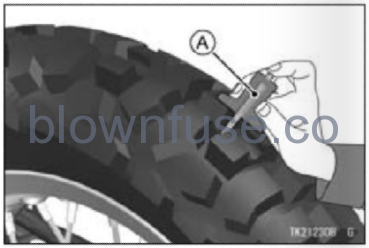 Tire Depth Gauge
Tire Depth Gauge
Minimum Tread Depth
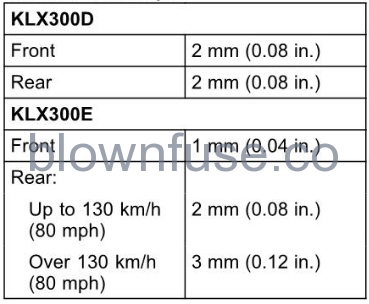
- Visually inspect the tire for cracks and cuts, replacing the tire in case of bad damage. Swelling or high spots indicate internal damage, requiringV tire replacement.
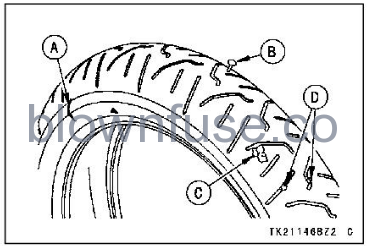
- Crack or Cut
- Nail
- Swelling or High Spot
- Stone
- Remove any embedded stones or other foreign particles from the tread.
NOTE
- Have the wheel balance inspected whenever a new tire is installed?
WARNING
Tires that have been punctured and repaired do not have the same capabilities as undamaged tires and can suddenly fail, causing an accident resulting in serious injury or death. Replace damaged tires as soon as possible. To ensure safe handling and stability, use only the recommended standard tires for replacement, inflated to the standard pressure. If it is necessary to ride on a repaired tire, do not exceed 100 km/h (60 mph) until the tire is replaced.
NOTE
- When operating on public roadways, keep maximum speed under traffic law limits.
Standard Tire (Tube-type)
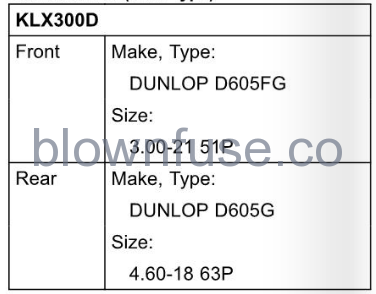
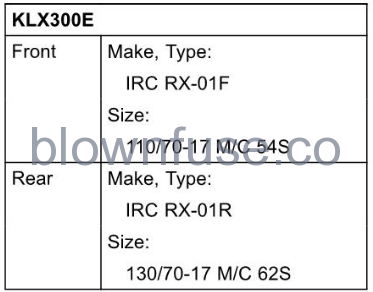
WARNING
Mixing tire brands and types can adversely affect handling and cause an accident resulting in injury or death. Always use the same manufacturer’s tires on both front and rear wheels.
WARNING
New tires are slippery and may cause loss of control and injury. A break-in period of 160 km (100 miles) is necessary to establish normal tire traction. During break-in, avoid sudden and maximum braking and acceleration, and hard cornering.
